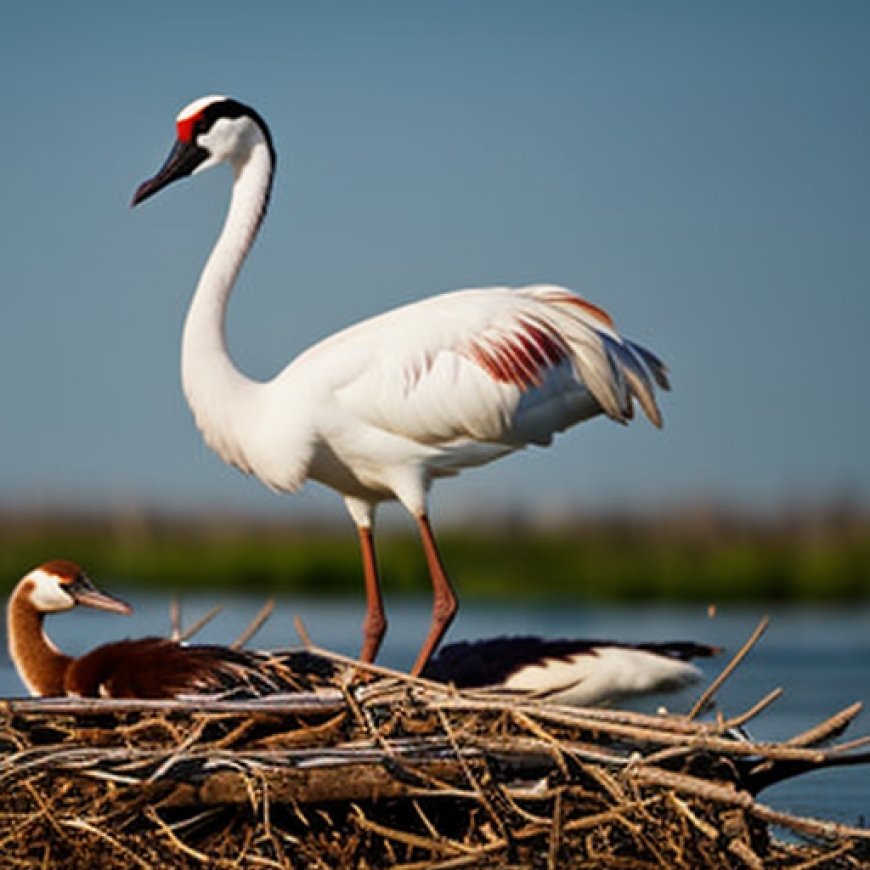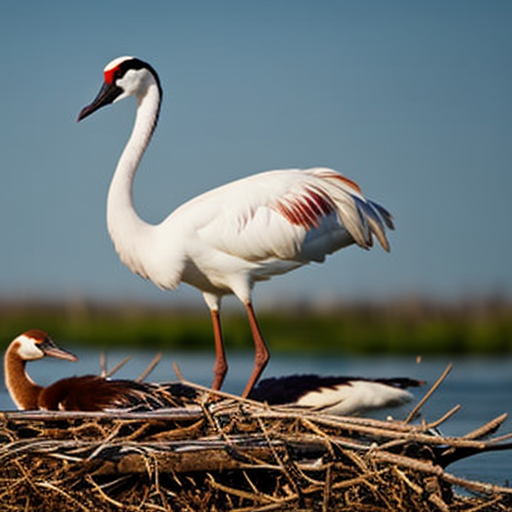Reward Raised to $15,000 for Info on Louisiana Whooping Crane Killing
Reward Raised to $15000 for Info on Louisiana Whooping Crane Killing Center for Biological Diversity


The Center for Biological Diversity Increases Reward for Information on Illegal Killing of Whooping Crane

Introduction
The Center for Biological Diversity has raised the total reward to $15,000 for any information that leads to the conviction of the person responsible for the illegal killing of a whooping crane in Mamou, Louisiana. This increase in reward comes after the U.S. Fish and Wildlife Service announced a $5,000 reward last week.
Background
The whooping crane is an endangered species protected under both the Endangered Species Act and the Migratory Bird Treaty Act. Historically, their population drastically declined due to habitat loss and shootings, with only 15 birds remaining at one point. The Louisiana population of whooping cranes went extinct. However, after being listed as endangered, efforts have been made to restore their population. Currently, there are over 600 whooping cranes in Texas, Louisiana, and Florida.
Description of Whooping Crane
The whooping crane is North America’s tallest bird, with males standing nearly 5 feet tall and having a wingspan of 7 feet. They have a unique 5-foot-long coiled trachea that allows them to produce a loud single-note call, which is likely the origin of their name. Whooping cranes can live up to 28 years in the wild, and mating pairs remain bonded for life. They are the world’s rarest crane species and are only found in North America, with approximately 85 remaining in Louisiana.
Call for Information
The juvenile whooping crane was found dead on January 9th near an agricultural pond in Mamou. An autopsy conducted by the U.S. Fish and Wildlife Service confirmed that the bird was shot. The Center for Biological Diversity is urging anyone with information about the shooting to come forward and contact the U.S. Fish and Wildlife Service at (985) 882-3756 or the Louisiana Department of Wildlife and Fisheries Lake Charles Office at (337) 491-2588.
SDGs, Targets, and Indicators
1. SDGs Addressed or Connected to the Issues Highlighted in the Article:
- SDG 15: Life on Land – Protect, restore, and promote sustainable use of terrestrial ecosystems, sustainably manage forests, combat desertification, and halt and reverse land degradation and halt biodiversity loss.
- SDG 16: Peace, Justice, and Strong Institutions – Promote peaceful and inclusive societies for sustainable development, provide access to justice for all, and build effective, accountable, and inclusive institutions at all levels.
2. Specific Targets under Those SDGs Based on the Article’s Content:
- SDG 15.5: Take urgent and significant action to reduce the degradation of natural habitats, halt the loss of biodiversity, and protect and prevent the extinction of threatened species.
- SDG 16.4: By 2030, significantly reduce illicit financial and arms flows, strengthen the recovery and return of stolen assets, and combat all forms of organized crime.
3. Indicators Mentioned or Implied in the Article to Measure Progress towards the Identified Targets:
- Indicator for SDG 15.5: Number of species protected under national and international law.
- Indicator for SDG 16.4: Number of convictions for illegal killing or trafficking of protected species.
Table: SDGs, Targets, and Indicators
| SDGs | Targets | Indicators |
|---|---|---|
| SDG 15: Life on Land | Target 15.5: Take urgent and significant action to reduce the degradation of natural habitats, halt the loss of biodiversity, and protect and prevent the extinction of threatened species. | Indicator: Number of species protected under national and international law. |
| SDG 16: Peace, Justice, and Strong Institutions | Target 16.4: By 2030, significantly reduce illicit financial and arms flows, strengthen the recovery and return of stolen assets, and combat all forms of organized crime. | Indicator: Number of convictions for illegal killing or trafficking of protected species. |
Note: The article discusses the illegal killing of a whooping crane, an endangered species protected under the Endangered Species Act and the Migratory Bird Treaty Act. This issue relates to SDG 15, which aims to protect and restore terrestrial ecosystems and halt biodiversity loss. Additionally, the article highlights the need to bring the perpetrator to justice, connecting to SDG 16, which focuses on promoting peace, justice, and strong institutions.
Behold! This splendid article springs forth from the wellspring of knowledge, shaped by a wondrous proprietary AI technology that delved into a vast ocean of data, illuminating the path towards the Sustainable Development Goals. Remember that all rights are reserved by SDG Investors LLC, empowering us to champion progress together.
Source: biologicaldiversity.org

Join us, as fellow seekers of change, on a transformative journey at https://sdgtalks.ai/welcome, where you can become a member and actively contribute to shaping a brighter future.







